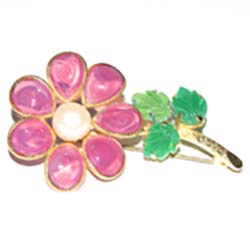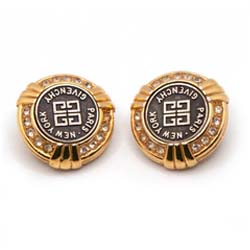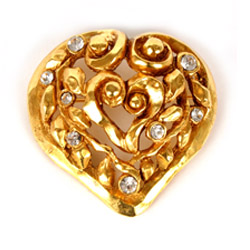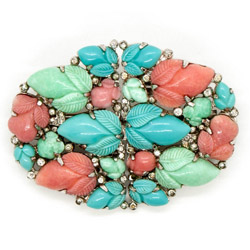How to Date and Identify Genuine Chanel Jewellery
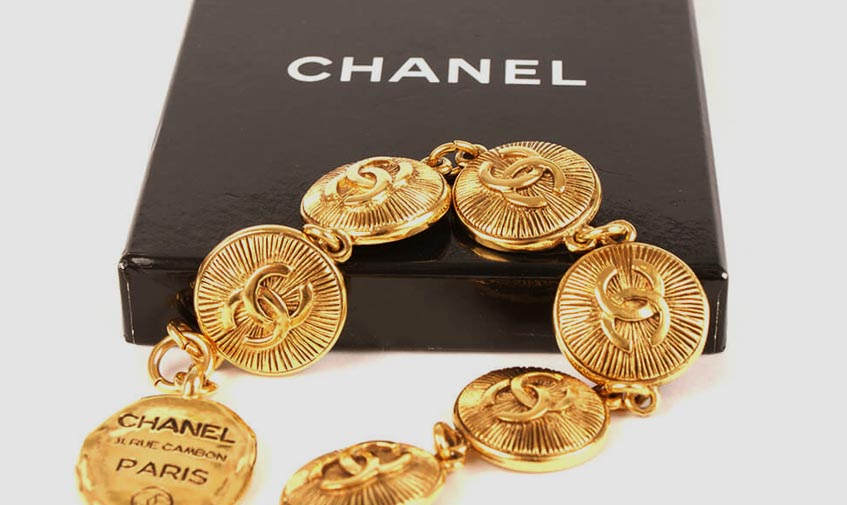
Chanel jewellery from the 20th century is highly collectible and can be very expensive. It’s therefore important to be able to recognize genuine Chanel signatures and to use those signatures to date a piece of jewellery and assess its value.
Buy Vintage Chanel Jewellery |
|||
|---|---|---|---|
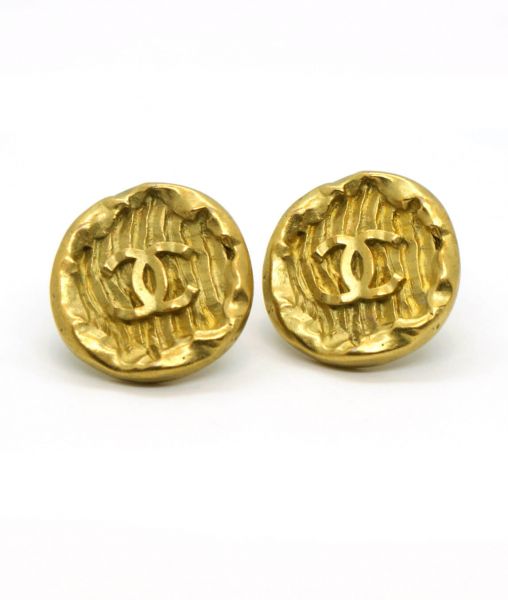
|
Vintage Chanel CC Logo Earrings 1990s |
||
Early Chanel Jewellery (1920s and 1930s)
'CHANEL' in sans-serif uppercase text was registered in 1925 to Chanel however, most of the earliest pieces of Chanel jewellery were unsigned. Many pieces were made in collaboration with the glass jewellery maker, Maison Gripoix, these pieces were made solely to compliment Chanel clothing. While some of these pieces were signed ‘Made in France’ or ‘France’ attribution to Chanel will rely on the knowledge and experience of the collector and their familiarity with jewellery from this era and the hallmarks of Gripoix craftsmanship.
Chanel in script - 1940s
Coco Chanel closed her couture house for the duration of the second world war and reopened in 1954, therefore you should beware of any Chanel pieces attributed to the 1940s.
You may come across pieces from the 1940s which are signed ‘Chanel’ in cursive script. These pieces are typically enameled on base metal and were actually made by an American company, Reinad, also known as the Chanel Novelty Company, not Chanel the French couturier. Coco Chanel successfully sued Reinad and they were compelled to stop using the Chanel mark on their jewellery. Although they are not Chanel, these Reinad pieces are also collectible.
Chanel Jewellery 1954-1971
From 1954 until Coco Chanel’s death in 1971 many pieces, though not all, were marked ‘CHANEL’ in uppercase, sans-serif text. This mark was stamped into the metal on the back of the piece, stamped onto a rectangular plaque affixed to the back of the piece, or attached as a metal tag on pieces like necklaces. It is worth noting that the stamp was not always centrally aligned on its tag/plaque and that an unaligned stamp is not an indicator of an item’s authenticity.
Chanel Couture Jewellery
A special mark was reserved for the haute couture pieces which were very limited in number and of the highest quality. The mark was the same as above with the addition of three, five-pointed stars, placed below the ‘CHANEL’ stamp.
Chanel Jewellery 1971- 1980
Chanel jewellery marks changed in 1971 to a circular plaque. The plaque often had a circular border with ‘CHANEL’ stamped close to the centre. The copyright symbol, ©, sat at the top left and a registered mark, an ‘R’ within a circle, sat at the top right. The interlocking ‘CC’ sat below ‘CHANEL’ and ‘MADE IN FRANCE’ sat along the bottom and followed the shape of the circle.
Earrings from this era are sometimes marked ‘© CHANEL’ on a rectangular plaque rather than in the circular plaque.
Chanel Jewellery from the early 1980s
In 1980 a four-digit date, for example © 1981, accompanied by the copyright symbol replaced ‘Made in France’ on the marker.
Chanel Jewellery from 1986 – 1992
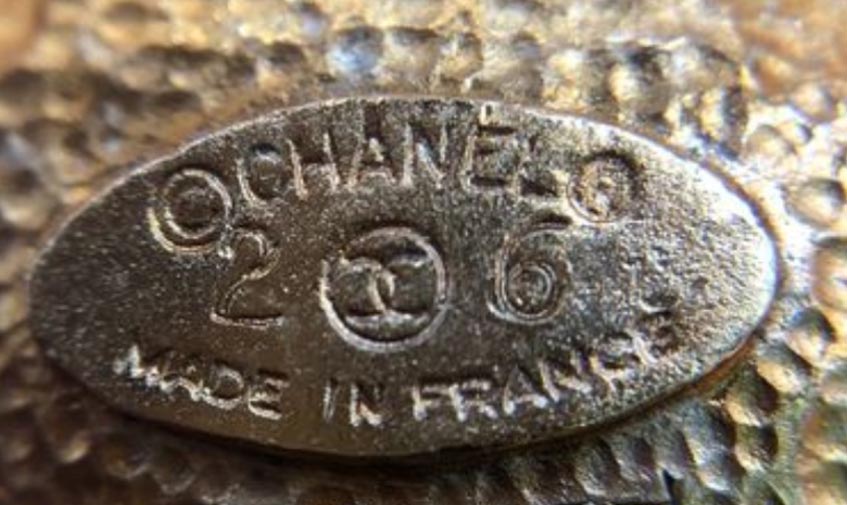
From 1986 onwards the signature plaques became oval in shape. These new plaques were more closely tied to the season of each piece and were used from the 23rd season to the 29th season. The two digits sat on either side of the interlocking CC logo, for example ‘2 cc 9’ would indicate season 29. ‘Made in France’ was displayed at the bottom of each plaque with ‘CHANEL’ at the top accompanied by the copyright and registered symbols.
Chanel Jewellery Marks 1990-1992
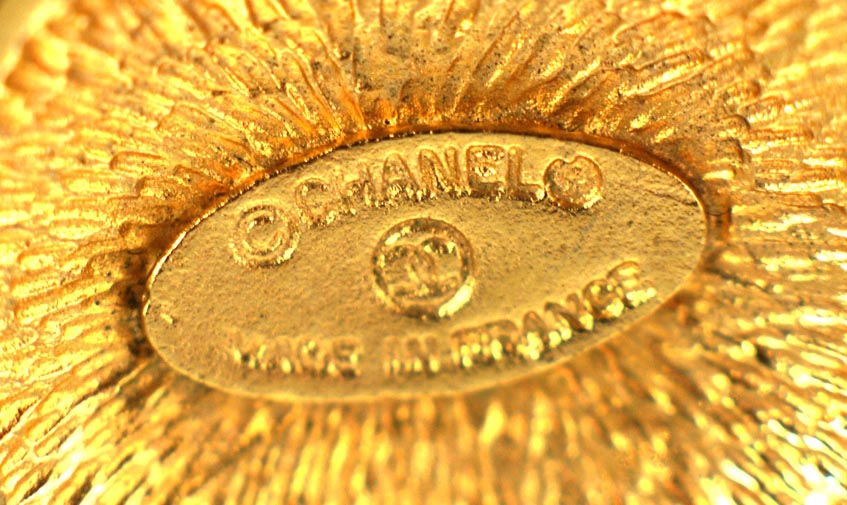
In the 1990/1991 seasons and perhaps the 1991/1992 seasons oval plaques were used but the date and season identification were removed. A good example of the dateless plaque is seen on this Chanel Rue Cambon bracelet.
Chanel Jewellery Stamps from 1993 onwards
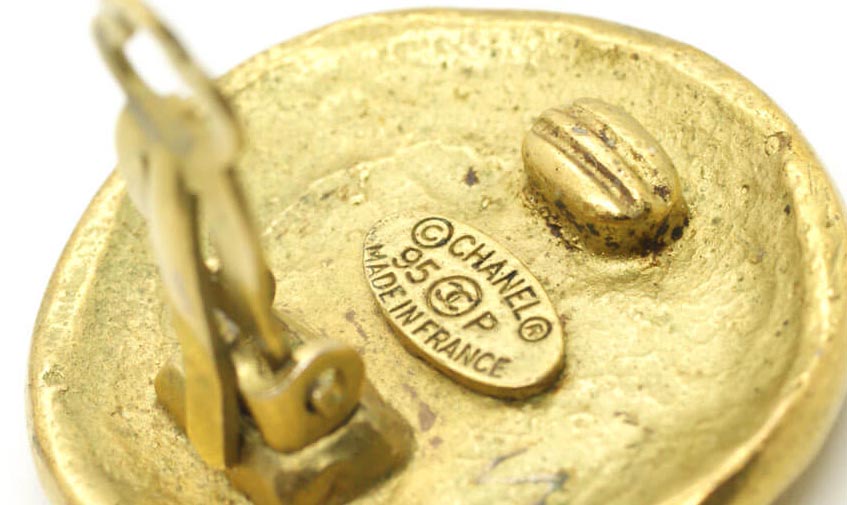
In 1993 the signature plaques were redesigned to what we see today. The oval plaque clearly indicates the season using the last two digits of the date year, for example ‘93’ for 1993 to the left of the CC logo with a letter to the right. The letters correspond to the French word for that season, ‘A’ for autumn, ‘P’ for spring, ‘C’ for cruise and ‘V’ for summer. A and P are most frequently used.
The circular and oval plaques were usually affixed to the back of a piece but they were sometimes wrapped around a chain, fixed onto a bead or pearl or added as a link into a chain. View our current collection of vintage Chanel jewellery.

